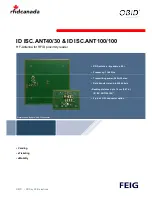
11
10
AVOID LIFE THREATENING SITUATIONS
- Avoid life threatening situations at work by complying with the following
recommendations.
- Never work with a clamp which has not been approved.
- Keep a safe distance during lifting work and never walk or stand under the load.
- Do not use the clamp if it is damaged or has been damaged.
- Always have a damaged clamp immediately repaired by Terrier Lifting Clamps B.V. or
another authorised revision company.
- Never lift more than one sheet simultaneously.
- Never lift sheeting which is heavier than the safe working load (WLL) given on the clamp,
in the certificate and in the table.
- Never lift sheeting which is thicker or thinner than the jaw opening (as given on the clamp
and in the certificate).
- When using a number of lifting clamps opposite each other, make sure the hoisting belts
or chains are long enough.
- Clean the area where the clamp is to be attached, removing any grease, oil, dirt, corrosion
and mill scale.
- Make sure the clamp (or clamps) is (are) attached in such a way that the load is balanced
during lifting.
- The sheeting surface must not be harder than 37 HrC (345 Hb, 1166 N/mm2).
- All clamps may only be used under normal atmospheric conditions.
WARNING
- A free fall or uncontrolled swinging on the crane hook whereby there is contact with
objects can damage the clamp. Should this occur, the clamp must first be thoroughly
inspected before further use.
- Lifting clamps are not suitable as a form of permanent link.
- The clamp must be inspected monthly, see Section 6 - Maintenance.
- Do not make any constructional modifications to the clamp (welding, grinding, etc.), as
such modifications may negatively affect its operation and safety. If any such
modifications are made, all forms of warranty and product liability become invalid.
- The warranty and liability conditions also only apply when original Terrier components are
used.
5 HOISTING
- Check whether the safe working load (WLL) of the clamp is sufficient for the force exerted
in the hoisting situation.
- Attach the lifting clamp to the hoisting equipment:
1 directly on a crane hook with safety securing device,
2 by means of a chain shackle or D shackle,
3 by means of a belt or chain possibly in combination with a chain shackle or D shackle.
- Make sure all attachment devices are approved and are of the correct tonnage. All the
attachment links and securing devices must be sufficiently large, so that the clamp can
move freely in the hook.
- Check that the clamp has no visible damage.
- Check that the clamp opens and closes easily.
- Clean the object where the lifting clamp will be fitted, removing, grease, dirt and mill
scale.
- Open the clamp by means of the spindle
Position the jaw fully on the object and make sure the clamp is attached in such a way that
the load is balanced during hoisting.
- Secure the clamp by completely tightening the spindle.
Use at least 40 Nm for the 1.0 TSCC t/m 6.0 TSCC and at least 10 Nm for the 0.5 TSCC. This
force can possibly be increased further when hoisting heavier or thicker materials.
- Hoist steadily to allow effective gripping on taking up the load.
- If the load slips, work through the "hoisting" section (5) again.
- Make sure the load is stably positioned before the clamp is removed from the object.
6
MAINTENANCE
- Check the general condition of the clamp at least once monthly, see the
"removal/installation" section (7).
- Do not use the clamp if:
- the housing is damaged or deformed, especially the corners of the jaw,
- the fastening is visibly deformed,
- the pivot is stretched or broken,
- the spindle mechanism, no longer works (properly),
- the split pin is missing.
- the marking on the clamp is no longer legible.
Depending on the extent of damage discovered:
- remove and clean the clamp (see "removal/installation" section (7)) or
- have the clamp revised by Terrier Lifting Clamps B.V. or another authorised revision
company (see "revision" chapter (8)).
If in doubt, contact your supplier.
7
REMOVAL/INSTALLATION
- Open the clamp completely.
- Carefully remove the spindle from the
housing. (1)
- The cam can now be removed from the
spindle (2)
- Remove the securing device. (3)
- Remove the pivot by removing the nut and
bolt (6 & 7)
- Clean all parts using a standard degreasing
agent.
- Grease the spindle and the inside of the
cam.
- Put everything back in the reverse order.
- Always install new, original split pins.
- When replacing parts, always use original Terrier parts.
- Remove any burrs with a file.
If in doubt, contact your supplier.
English

































